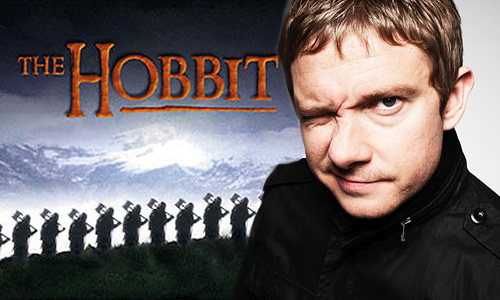All is not well in Middle Earth.
Director Peter Jackson debuted ten minutes of footage from his upcoming ‘Lord Of The Rings’ prequel, ‘The Hobbit An Unexpected Journey,’ at CinemaCon in Las Vegas yesterday, and the number of negative reactions was startling.
Jackson is shooting the hotly anticipated film in 3D and using new 48fps (frames per second) technology, which is twice the 24fps which has been the standard frame rate for movies since the 1930s. ‘The Hobbit’ will be the first major studio film to be shot using this technology.
The new technology has not received a warm response – with Filmdrunk saying “everyone hated it.”
Badass Digest’s Devin Faraci said of the footage:
“…it has that soap opera look you get from badly calibrated TVs at Best Buy. The footage I saw looked terrible … completely non-cinematic. The sets looked like sets … sets don’t even look like sets when you’re on them live, but these looked like sets. The magical illusion of cinema is stripped away completely.”
An (anonymous) projectionist from a competing studio told the Los Angeles Times: “it looked like a made-for-TV movie. It was too accurate — too clear. The contrast ratio isn’t there yet — everything looked either too bright or black.”
Not all responses were negative however. Variety film editor Josh Dickey Tweeted:
Josh Dickey @Variety_JLD
Josh Dickey
Great Scott, THE HOBBIT in 48 frames-per-second is a thing to behold. Totally different experience. Not all will like the change.
April 24, 2012 6:51 pm via Twitter for iPhone Reply Retweet Favorite
And First Showing’s Alex Billington summed up the views of many (including director Jackson) with this tweet:
Alex Billington @firstshowing
Alex Billington
There are going to be endless debates about 48FPS and how good/bad it looks. I just think we need to get used to change after 80yr of 24FPS.
Advocates of the technology, most notably ‘Avatar’ director James Cameron and Jackson himself say that the technology will help address the problems people had with early 3D. Jackson said last year:
Looking at 24 frames every second may seem ok–and we’ve all seen thousands of films like this over the last 90 years–but there is often quite a lot of blur in each frame, during fast movements, and if the camera is moving around quickly, the image can judder or “strobe.”
Shooting and projecting at 48 fps does a lot to get rid of these issues. It looks much more lifelike, and it is much easier to watch, especially in 3-D.
Audiences will have to wait until December 2012, when the first of the two Hobbit films is released, to decide for themselves.

